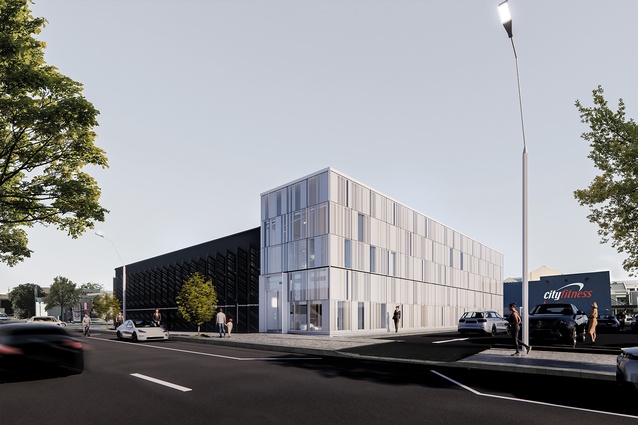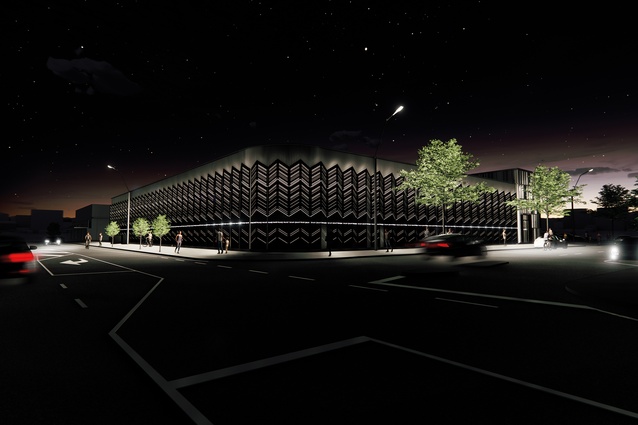Priceless taonga set to come home
RTA Studio has designed a two-level, 2067m2 home to house approximately 90,000 artefacts for the Hastings and Napier Councils in Hastings’ cultural precinct.
The Hawke’s Bay Regional Museum Research and Archives Centre is being built on the site of a former Briscoes warehouse, which has been stripped down to the original structure’s concrete pad, columns and primary steel roof portals. “This re-use approach meant we reduced the need for new concrete by 715 tonnes and steel by 25 tonnes – a huge win in terms of sustainability,” says RTA Studio project lead Casey Anderson.
The state-of-the-art temperature- and humidity-controlled facility explores the notion of dark and light through the juxtaposition of two forms: a ‘Lighthouse’ and a ‘Darkhouse’, which mark a separation between public/private, active/ passive and conservation/storage functions. A central seismic gap separates the two buildings. “For seismic safety, the two structures cannot touch each other; they appear connected but move independently in an earthquake,” explains Anderson.
The RTA design team collaborated closely with mana whenua and MTG (Museum Theatre Gallery) conservators during the design process. “Te ao (the light), te po (the dark) and te kore (the void/transition) represent the Māori world view that there is strength in two opposing forces,” says Anderson.
The laser-cut aluminium façade on the storage facility resembles a huia feather, which aligns with the narrative of protection: an ornate cloak to shield the precious taonga within. Symbols representing significant parts of the collection will be added to the façade at eye level so passers-by can connect with the items within. At night, lights will glow through apertures in the façade and through the white administration block’s fritted-glass coat, so the structure becomes “a beacon of positivity and history within the precinct,” Anderson says.
The project, which is expected to be complete in April 2025, will see the region’s extensive collection of ancestral taonga, worth close to $30 million, stored and preserved together in one civic facility for the first time.











